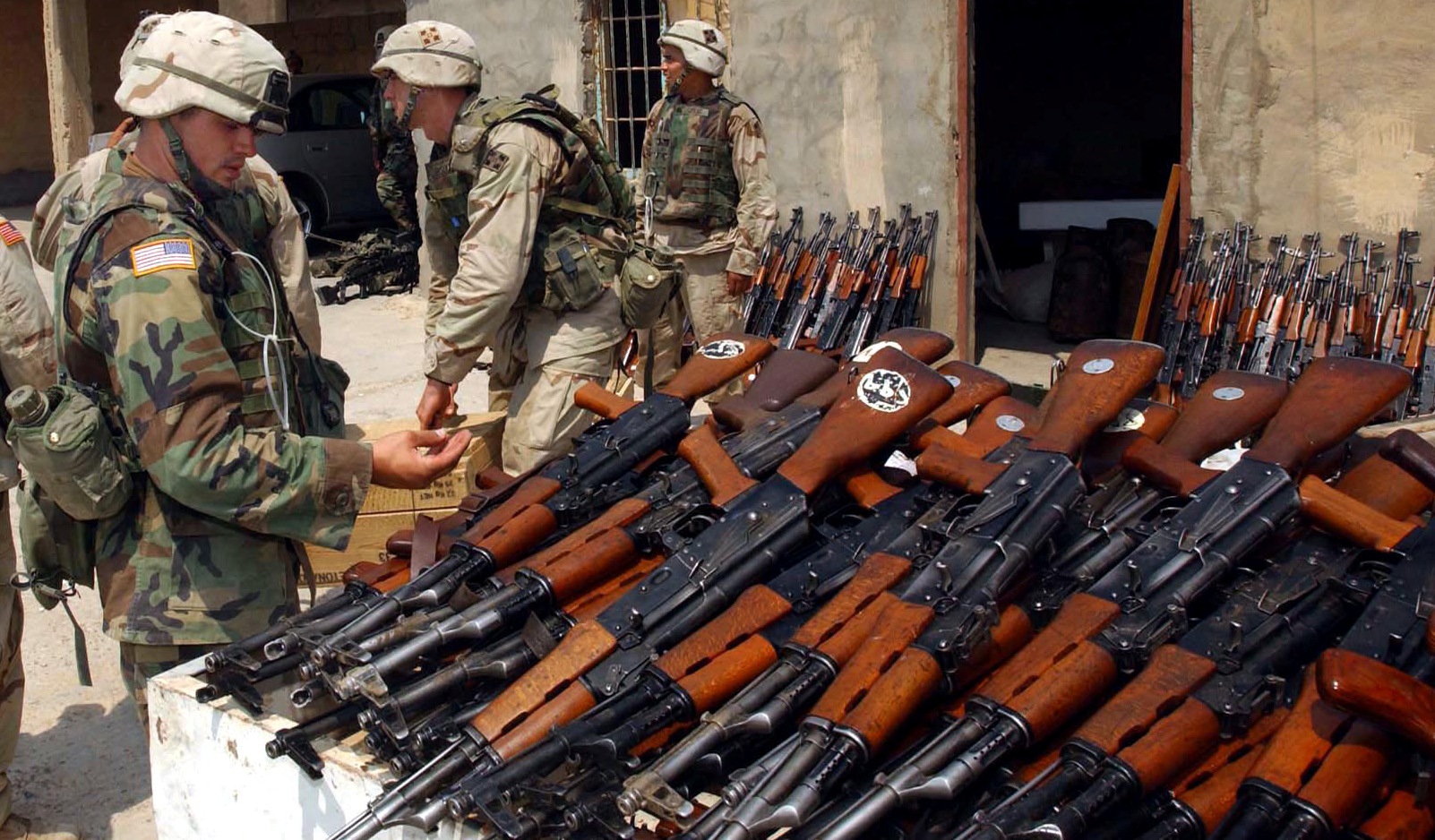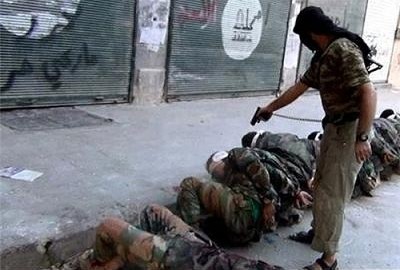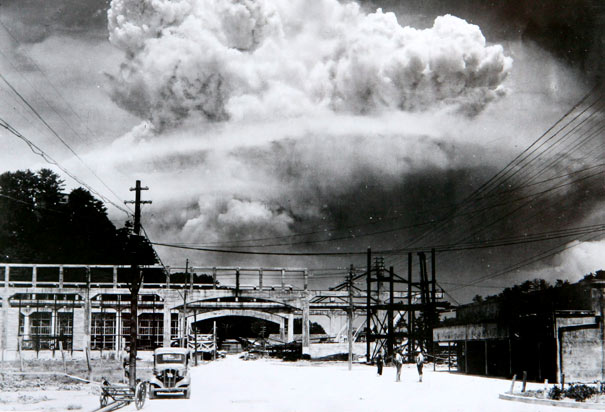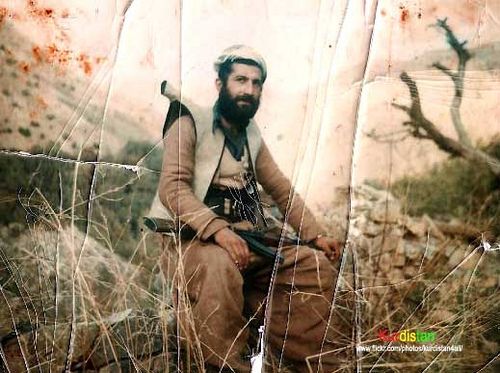...
Watching ISIS irregular forces effortlessly roll up 30,000 square miles of territory in Iraq and Syria in a matter of weeks has seemed shocking. How does what is essentially a guerrilla militia force take on not one but two well-equipped professional armies along with an unknown number of opposition militias and win victory after victory?
The main thing to know is that these are not the kinds of battles we're used to seeing from here in the US. There is no technology, very little in the way of decisive air power, and an extremely small number of heavy weapons. These are the ultimate in small-unit infantry battles, all about using maneuver to locate a weak point and bring massed fires to bear on that point. It's about avoiding head on fights unless you have overwhelming numerical and firepower advantages, and rather working flanks, enveloping and bypassing positions of strength and cutting them off from resupply.
A successful guerrilla or insurgent army needs very little in the way of equipment. It fights and moves on funding and ideology, demanding incredible service and sacrifice from its members. In the end this is a throwback to the combat of a century ago, before armor and air power and massed artillery changed the nature of warfare. This is people with guns and courage fighting it out at short range in desperate firefights and long sieges.
And over the years, third-world insurgencies and militias have perfected the mix of weapons they issue their infantry troops. You might think these fighters are under-equipped, but these are the weapons that are re-drawing the map on two continents. I often think of them as the unholy trinity.
AK-47/AK-74
 |
| Too bad they didn't make more of these |
This is the ultimate peasant infantry rifle. Simple, reliable and effective, it is said that an experienced Sergeant can make an illiterate farmer proficient with the AK in one day of training. The AK-47 was the original mass-production assault rifle, modeled on the German StG-44. (As a reminder, an assault rifle is any automatic rifle with a detachable magazine chambered in an intermediate cartridge. It is the cartridge that makes it an assault rifle, not any specific characteristic of the rifle itself.) The original AK-47 was chambered in the Soviet 7.65x39 .30 caliber cartridge. The updated version, the AK-74 followed the rest of the world in chambering for a .22 caliber cartridge, in this case the Russian 5.45x39.
With this lighter round, 30 round magazines and the capability of full automatic fire, a squad of infantry equipped with AKs can bring a truly awesome level of firepower to bear at short ranges. This storm of lead from a dozen or more AKs is nearly impossible to stand against, and often results in an advance by the attackers. These rifles are very forgiving in damp or dusty environments, can go thousands of rounds without cleaning, and are therefore ideal for local irregular forces with minimal training. The AK makes up in reliable firepower what it lacks in accuracy, range and knockdown power. But as we are about to see, it is only one of the weapons that make these forces so effective in this kind of fighting.
PKM Machine Gun
 |
| Allah's gonna have a whole lot of sorting 'em out to do | |
|
|
Essentially, the squad level infantry machine gun was perfected in 1942 by the Germans with the MG-42. Powerful, belt fed, high rate of fire, easy maintenance, fast barrel changes, light and portable, the MG-42 basically checked every box. So when former tank Sergeant and brilliant weapons designer Mikhail Kalashnikov set out to build a full-power machine gun based on his AK's action, he knew where to start. He chambered it in the powerful Mosin-Nagant 7.65x54R rifle cartridge, and built it to have a rate of fire of about 800 rounds per minute. The gun and integral bipod weighed less than 20 pounds and additional barrels and ammunition could be distributed among members of the squad.
The PKM gives a small unit the ability to lay down a base of fire out to 1500 meters without waiting for heavy crew-served weapons to be brought to the front. Pushing this kind of firepower down to the squad level was innovative in WWII - the Germans were big believers in this doctrine, but even the US with the BAR and the UK with the Bren began to adopt it - but it is now SOP among armies all over the world. But it's even more critical for these third-world militias and irregular fighters. They aren't going to get much in the way of heavy weapons or indirect fire support, so they'll need the ability to put heavy fire on specific targets while the other units maneuver to close or to break contact.
That's two thirds of the unholy trinity. Equip your guerilla forces with one rifle, one machine gun, and just a couple different standardized ammunition types. Logistics and training are simplified, and in any relatively numerically even battle the insurgents should have a quantitative edge in downrange firepower.
Rocket Propelled Grenade Launcher (RPG)
 |
| You want me to do WHAT? |
Getting lots of lead downrange is important, but what about when these irregular forces need to defeat a vehicle or a bunker, or breach a building or a wall? These forces don't have heavy weapons or for that matter a good way to transport gear beyond carrying it. This is truly the 'grunt infantry', where each fighter must carry their own clothing, food, water, first aid kit, weapons and ammunition plus equipment and ammunition for the Company is distributed among the individual fighters. So if you want to have the equivalent of a tank or an artillery piece, you need it in some kind of man-portable form factor. Enter those innovative Soviets, and the RPG-7.
In essence, the RPG is a hollow tube with a trigger unit and a sighting device. The business end is a 4 kilogram grenade-on-a-stick. When fired, a small gunpowder charge pushes the grenade out of the tube whereupon the rocket motor fires for about 10 seconds, boosting the grenade to a velocity of about 375 feet per second. It can be fired accurately at ranges inside 200 meters and is effective out past 500 meters. There is virtually no felt recoil.
This is another classically Soviet cheap, simple, reliable, portable and powerful weapon. Added to the AKs and the PKMs, the RPG gives that same squad of insurgents the ability to knock out vehicles, to eliminated bunkers and strongpoints and to breach walls and doors. In addition to their own gear, the other members of the squad carry a couple belts for the PKM or a couple rounds for the RPG.
And that's the Unholy Trinity. In a combat environment without the luxuries of a modern 21st century military - particularly air and armor - this is the weapons loadout your well equipped Jihadi army carries into battle. And with the right tactics, under the right conditions, it is all they need to win.
Bonus Jihadi Weapon System - The Technical
 |
| Looks like we got us a convoy |
But often these insurgent and guerrilla groups do have access to vehicles and heavier weapons. In 1991 in Somalia NGOs were legally prevented from bringing in private security contractors, they instead hired local bodyguards under what were euphemistically termed "Technical Assistance Grants". These tended to be militias, who used the wealth to acquire pickup trucks ( the Toyota Hilux was by far the most popular) and mount a machine gun in the back. Soon these improvised fighting vehicles came to be known as Technicals.
Today the Technical has evolved to fill many niches. They carry troops and supplies, they protect the leaders and warlords of the movement or militia, and they carry the wounded to aid stations. But most of all they are fighting vehicles, serving in the role that would have been filled by cavalry a hundred years ago. They can move quickly off-road, getting behind enemy positions and blasting them with massive firepower. Lacking armor, they are vulnerable to any opposing heavy weapons, but the advantage they provide in highly mobile firepower is unmatched.
An entry-level Technical might mount a PKM, but they more commonly carry much heavier guns. The 12.7mm Russian DShK, an equivalent to the US .50 caliber M-2 is most common, but you will also see KPM 14.5mm and even 2A14 23mm anti-aircraft guns.
If you think about a Company sized attack by militias armed like this and supported by three or four Technicals, you get a sense of the speed and violence an attack like these can deliver, and you can begin to understand why ISIS has been so successful. The training, courage, will and leadership it takes to get a unit to hold the line against that kind of assault at close range is rare in that part of the world, and until you find enough troops with the commitment to stand fast, ISIS holds a substantial tactical advantage.
...










